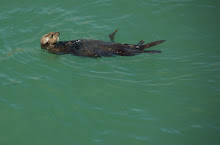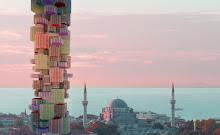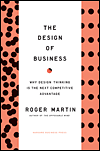Globalization, despite the frequency the word is used, is really a rather nebulous term.
 There are people who rail against it - how it is making the world all the same; diluting or destroying culture; oppressing the poor; increasing poverty. And there are valid points.
There are people who rail against it - how it is making the world all the same; diluting or destroying culture; oppressing the poor; increasing poverty. And there are valid points.
And then there are the positive aspects of globalization - increased understanding, awareness and empathy; greater shared knowledge; hybrid cultures; the blurring of once rigid boundaries; openness... and music.
Up until yesterday, I did not know anything about landlocked west African country of Niger. But on the urging of a friend, I went to listen to Etran Finatawa perform in their first ever tour of the U.S. And thanks to globalization, for an evening, I was transported to the Saharan crossroads of Niger while still physically located in my neighborhood in Santa Monica. The music they sang is described as Nomad's Blues. It is born out of the melding of the diverse cultural traditions of the Berber and northern African (Tuareg) cultures and sub-Saharan (Wodaabe) cultures of the south. The Tuareg and Wodaabe are nomadic groups that continue to this day to herd cattle in sub-Saharan Savannah. And while they have always traded with each other, they have also fought over the highly valued wells and salt deposits. The formation of this group served as a conscious effort to unite these two cultures as a symbol of peace and reconciliation.
a friend, I went to listen to Etran Finatawa perform in their first ever tour of the U.S. And thanks to globalization, for an evening, I was transported to the Saharan crossroads of Niger while still physically located in my neighborhood in Santa Monica. The music they sang is described as Nomad's Blues. It is born out of the melding of the diverse cultural traditions of the Berber and northern African (Tuareg) cultures and sub-Saharan (Wodaabe) cultures of the south. The Tuareg and Wodaabe are nomadic groups that continue to this day to herd cattle in sub-Saharan Savannah. And while they have always traded with each other, they have also fought over the highly valued wells and salt deposits. The formation of this group served as a conscious effort to unite these two cultures as a symbol of peace and reconciliation.
The group Etran Finatawa consists of 6 musician, 3 are Tuareg and 3 are Wodaabe. The Wodaabe do not use musical instruments but sing very polyphonic songs. The Tuareg have always used instruments (drums, violins and since the 1970's guitars) to animate their music. Etran Finatawa's songs combine the rigorous drum beat and rhythm of the Tuaregs with lyrical voices of the Wodaabe.
I had absolutely no understanding of what they were singing about and the sounds could not feel more distant. The two languages in which they sang (tamashek and fulfulde), could not be more foreign to me. Their costumes were rich and beautiful but unfamiliar. But somehow today, the day after the performance, I am still utterly mesmerized and entranced by their music. There is a longing and emotion in their music that crosses national boundaries or ethnic or cultural divides.

I read that their songs are about nomadic life, isolation and liberty, extreme hardship and poverty, harsh climate, beautiful women, happy days, the desert and the stars....
Globalization is making life for the nomads increasingly tough. Natural resources are limited and grain is expansive. Niger experienced droughts and famine in 2005. More and more nomads are selling their cattle to survive and filtering into the capital city of Niger in search of employment - leaving behind traditions.
And yet, at the same time, if it was not because of globalization, most of the world would have never had the opportunity to hear them play and learn their stories.
(For more information or to hear their music also check out: www.myspace.com/etranfinatawa)
* The bottom two pictures were taken by Joaquim Coelho
4.30.2008
The Global Journey (and Music) of Two Nomadic Tribes
4.26.2008
To: Spring
I am breaking with my usual posts to share with you my Saturday afternoon of bliss potting plants. I spent the past three hours under an unusually hot and blazing sun (for this time of year), covered in velvety rich soil. I watched bees hover around the lavender, a brilliant orange butterfly kiss the calla lilies, a couple hummingbirds resting their weary wings. What peace!


4.18.2008
The Age of Branding
What is your brand?
You are nothing without a brand.
 Brand names were once only identified with companies like Coca Cola, McDonalds, Sony, Mecedes-Benz. Celebrities have long lent their names and appeal to promote and market consumer products. Oprah Winfrey and Martha Stewart have been able to turn themselves into brands worth billions of dollars. In an age where competition is so aggressive and time and attention spans so limited, branding has become a highly coveted strategy and perhaps necessary. From art to politics to war to museums to cities to countries to architecture and of course business - all these varied entities have all developed brands to self-promote and compete in the global marketplace.
Brand names were once only identified with companies like Coca Cola, McDonalds, Sony, Mecedes-Benz. Celebrities have long lent their names and appeal to promote and market consumer products. Oprah Winfrey and Martha Stewart have been able to turn themselves into brands worth billions of dollars. In an age where competition is so aggressive and time and attention spans so limited, branding has become a highly coveted strategy and perhaps necessary. From art to politics to war to museums to cities to countries to architecture and of course business - all these varied entities have all developed brands to self-promote and compete in the global marketplace.
But what is a brand? According to Wikipedia, it is the following:
"Brands were originally developed to be labels of ownership: name, term, design, symbol. However, today it is what they do for people that matters much more, how they reflect and engage, how they define their aspirations and enable them to do more. Powerful brands can drive success in competitive and financial markets and indeed become the organization's most valuable asset."
But Dubai is not alone in seeking new strategies and methods to brand itself. Countries such as Romania, Egypt, New Zealand, Rwanda, Ireland, Turkey, Ireland and Finland have all engaged branding firms; as have cities like New York, Bilbao, Hong Kong and the city-state of Singapore. Nations are branding all their hard and soft power to create flashy identities to attracts tourists, businesses and the creative and wealthy global elite.
In an effort to become highly recognizable and competitive, many businesses, foundations and governments around the world are also paying top dollar to attract the brand name architect to build his/her signature building to garner even more attention and to get that critical stamp of global approv
 al. Bilbao's collection of buildings by brand name architects revived the city from near oblivion.
al. Bilbao's collection of buildings by brand name architects revived the city from near oblivion.Just as architects like Frank Gehry, Zaha Hadid, Tadao Ando, Richard Meier (to name a few) have now become a brand, so now has art and their artists. Salvador Dali touched fashion, movies, paintings and sculpture; as did Andy Warhol. More recently Takashi Murakami's flirtation with fashion proved very profitable for Louis Vuitton. His redesign of their signature logo was a tremendous hit. Murakami has perhaps epitomized the conscious effort of turning art and artist into a commercial brand by incorporating his name and his work.
Museums around the world are also jumping on the branding bandwagon. The Solomon R. Guggenheim Foundation has turned its Guggenheim name into a brand of museums that can be visited in New York, Bilbao, Venice, Berlin
 and Las Vegas. More recently and perhaps more surprisingly was the French government's agreement with Abu Dhabi to loan the Louvre brand and its art to Abu Dhabi for the next twenty years for the rumored sum of US$1 billion.
and Las Vegas. More recently and perhaps more surprisingly was the French government's agreement with Abu Dhabi to loan the Louvre brand and its art to Abu Dhabi for the next twenty years for the rumored sum of US$1 billion. Model of Abu Dhabi Louvre
Model of Abu Dhabi LouvreCourtesy of George W. Bush, we also have the War on Terror - the brand that encompasses and promotes an indefinite number of wars, and a whole host of shady activities that suspend human rights and civil liberties in the U.S.
In article for Artillery Magazine, Gordy Grundy writes that "branding is evolving from a simple product distinction to a sociological mirror of our culture.... It is a relatively new concept that is continually evolving with depth and intention." He anticipates that the brand will continue to evolve to include lifestyle, spirituality and sociology. And that is only the beginning.
Welcome to the Age of Branding.
Labels:
architecture n CITIES,
art n Fiction,
culture identity,
Dubai and the Gulf,
globalization,
politics
![]()
Posted by Deeba Haider
4.09.2008
The Fleeting Right to Define Yourself
It is tough to talk about Palestine and the Palestinians without being political. We hear about it from our politicians, in the media, in the news and there are fiercely passionate opinions and arguments from all sides. However, so often what is lost in all this chatter is the humanity and the common and some not so common struggles of daily life.
 Having spent so many years, trying to define my own identity, I cannot imagine not having that luxury. Yesterday, I attended a talk given by Suad Amiry at UCLA. Who is she you may ask? Well, she is first an architect with PhD from the University of Edinburgh, a conservator, a writer, a minister, a wife, a daughter, a friend... and she is also Palestinian. However, for just one day she said, she would love to not have to deal with psychological toll of what it means to be Palestinian. Or at least what it means to be Palestinian as labeled by the outside world.
Having spent so many years, trying to define my own identity, I cannot imagine not having that luxury. Yesterday, I attended a talk given by Suad Amiry at UCLA. Who is she you may ask? Well, she is first an architect with PhD from the University of Edinburgh, a conservator, a writer, a minister, a wife, a daughter, a friend... and she is also Palestinian. However, for just one day she said, she would love to not have to deal with psychological toll of what it means to be Palestinian. Or at least what it means to be Palestinian as labeled by the outside world.
As an architect, she is the director of RiWaQ. They conserve the architectural heritage of Palestine. Her goal is to protect the multiple layers of history that is Palestine - the Greek, the Roman, the Byzantine, the Ottoman, the Arab, the Christian, the Islamic, the Jewish. The act of restoration becomes a tool for development as it employs the local villagers. Once preserved these buildings are converted into community centers.
For 31 days, unable to leave the house, or use the phone, two very opinionated women tolerated each other as days started to blur. She talked about the adept skill required to make a cappuccino in a kitchen with a barrel of a tank pointed at the window. She also described the chaos that ensues when for a few hours the curfew is lifted and 70,000 residents of Ramallah descend on the five grocery shops to stock up on supplies. She also mentioned how wedding invitations in Ramallah go out with multiple back up dates just in case there is still a curfew imposed. The joyous occasion is set for this day...however if the curfew continues then it will be on this day...and if that day is also under curfew, then the following day...and so on. (Having planned a wedding, I was barely able to coordinate one day, let alone one with five alternative dates)!
 Her more recent book "No Sex and the City" is set after the Hamas victory, wherein she mourns the loss of the Palestine she knew and loved. The secularism and pluralism she fought for and valued is now she claimed replaced with fundamentalism and localism. Politicians in Palestine and globally, she argued, have reduced their individual identities to narrow categories of Sunni, Shia, martyr, terrorist, victim and their political groups. She fears that the election of Hamas will only perpetuate these stereotypes of Palestinians.
Her more recent book "No Sex and the City" is set after the Hamas victory, wherein she mourns the loss of the Palestine she knew and loved. The secularism and pluralism she fought for and valued is now she claimed replaced with fundamentalism and localism. Politicians in Palestine and globally, she argued, have reduced their individual identities to narrow categories of Sunni, Shia, martyr, terrorist, victim and their political groups. She fears that the election of Hamas will only perpetuate these stereotypes of Palestinians.Many governments (including the U.S. and the Palestinian), now use fear as a tool to govern, she explained. Citizens have become hostages to their own governments. And because of fear, the ability to judge a situation accurately is lost. There is a lack of logic in this world, she sighs. What distresses her the most, is that in her opinion, some Arabs have unfortunately lived up to the western stereotype of them.

* The murals I have shown here were done by English graffiti writer Banksy on the wall the Israelis are building around the West Bank.
4.02.2008
Even Camels Need Some Love & Appreciation & a Little Cash
 Amidst the glamour of the most expansive gold and marble drenched hotel-the Emirates Palace, and the endless high-rises that kiss the sky and man-made islands in every direction, the ruler of Abu Dhabi, Sheikh Khalifa bin Zayed is hosting this month, the largest "Camel Beauty Contest," as part of the Mazayin Dhafra Camel Festival. Ten thousand camels from countries all over the Gulf- Saudi Arabia, Bahrain, Oman, Qatar are participating. Anyone who can prove the pedigree of their camel can enter.
Amidst the glamour of the most expansive gold and marble drenched hotel-the Emirates Palace, and the endless high-rises that kiss the sky and man-made islands in every direction, the ruler of Abu Dhabi, Sheikh Khalifa bin Zayed is hosting this month, the largest "Camel Beauty Contest," as part of the Mazayin Dhafra Camel Festival. Ten thousand camels from countries all over the Gulf- Saudi Arabia, Bahrain, Oman, Qatar are participating. Anyone who can prove the pedigree of their camel can enter.
This festival is part of a $80 billion campaign to revive local Bedouin culture in a part of the world that is transforming at lightening speed. According to festival organizer, Mohammed al-Mazrouei "preserving the rich heritage of the UAE and passing it on to future generations constitutes one of the most important missions which people of the UAE wish to undertake...." Organizers are hoping that this festival will remind Emiratis of their traditional Bedouin values. The camel, otherwise known as the "ship of the desert" has been an integral part of desert life and has long been appreciated as a measurement of wealth. (Yours truly was once offered 400 camels by a random stranger in exchange for her hand in marriage in Morocco. I kindly declined the offer).
A hundred cars and financial awards totaling close to ten million dollars will be given to the winners. The camels will be judged by a panel of experts for their form and beauty according to their age group. Some camels have been known apparently to fetch millions of dollars. "Camels are a part of our culture and this is a chance to celebrate their beauty and make some money at the same time," said Salem Ebrahim al-Mazrouei, a spokesman for the festival.
 Incredible creatures, camels no doubt are worthy of much appreciation and awe. And their integral role in Bedouin culture is duly noted. However, I cannot help but wonder that in this age of globalization, materialism and inter-connected economies has even our most private and sacred cultures and traditions become commodified and commercialized? Can everything anywhere now be marketed, branded and sold for a profit?
Incredible creatures, camels no doubt are worthy of much appreciation and awe. And their integral role in Bedouin culture is duly noted. However, I cannot help but wonder that in this age of globalization, materialism and inter-connected economies has even our most private and sacred cultures and traditions become commodified and commercialized? Can everything anywhere now be marketed, branded and sold for a profit?
* The first picture of the camel close-up was taken from the BBC news website.


























